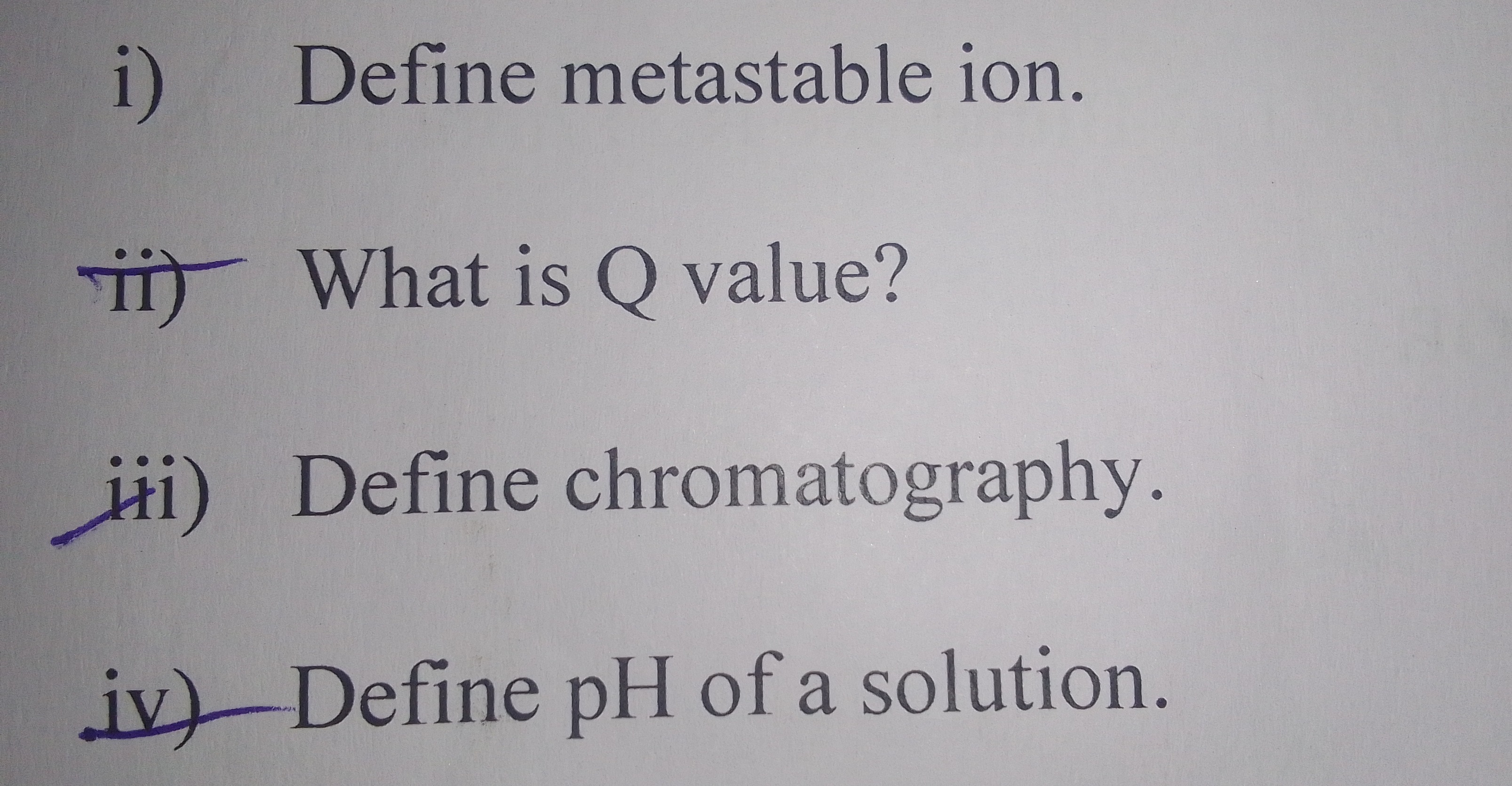Question
Question: i) Define metastable ion. ii) What is Q value? iii) Define chromatography. iv) Define pH of a sol...
i) Define metastable ion.
ii) What is Q value?
iii) Define chromatography.
iv) Define pH of a solution.

i) Metastable ion: An ion that fragments in a field-free region of a mass spectrometer. ii) Q value: Energy released or absorbed in a nuclear reaction. iii) Chromatography: A separation technique based on differential distribution between stationary and mobile phases. iv) pH of a solution: Negative logarithm of the hydrogen ion concentration.
Solution
Here are the definitions for the given terms:
i) Metastable ion: In mass spectrometry, a metastable ion is an ion that is formed in the ion source but fragments spontaneously in a field-free region of the mass spectrometer before reaching the detector. These ions yield broad, diffuse peaks (metastable peaks) in the mass spectrum, often at non-integer m/z values.
ii) Q value: In nuclear physics, the Q value of a nuclear reaction is the amount of energy released or absorbed during the reaction. It is defined as the difference between the total rest mass energy of the reactants and the total rest mass energy of the products. A positive Q value indicates an exothermic reaction (energy is released), while a negative Q value indicates an endothermic reaction (energy is absorbed).
Q=(∑mreactants−∑mproducts)c2
iii) Chromatography: Chromatography is a widely used analytical technique for separating components of a mixture. The separation is based on the differential distribution of the components between a stationary phase and a mobile phase. Different components travel at different speeds through the stationary phase, depending on their interactions with both phases, thus separating them.
iv) pH of a solution: The pH of an aqueous solution is a measure of its acidity or alkalinity. It is defined as the negative base-10 logarithm of the molar concentration of hydrogen ions ([H⁺]).
pH=−log10[H+]
Equivalently, it can be defined as the base-10 logarithm of the reciprocal of the hydrogen ion concentration.
pH=log10([H+]1)
Explanation:
i) Metastable ions are observed in mass spectrometry and indicate fragmentation occurring outside the primary acceleration/deflection regions.
ii) The Q value quantifies the energy balance in a nuclear reaction, determining if energy is released or absorbed.
iii) Chromatography is a fundamental separation technique based on differential partitioning between two phases.
iv) pH is a logarithmic scale used to express the concentration of hydrogen ions and indicate the acidity or basicity of a solution.
